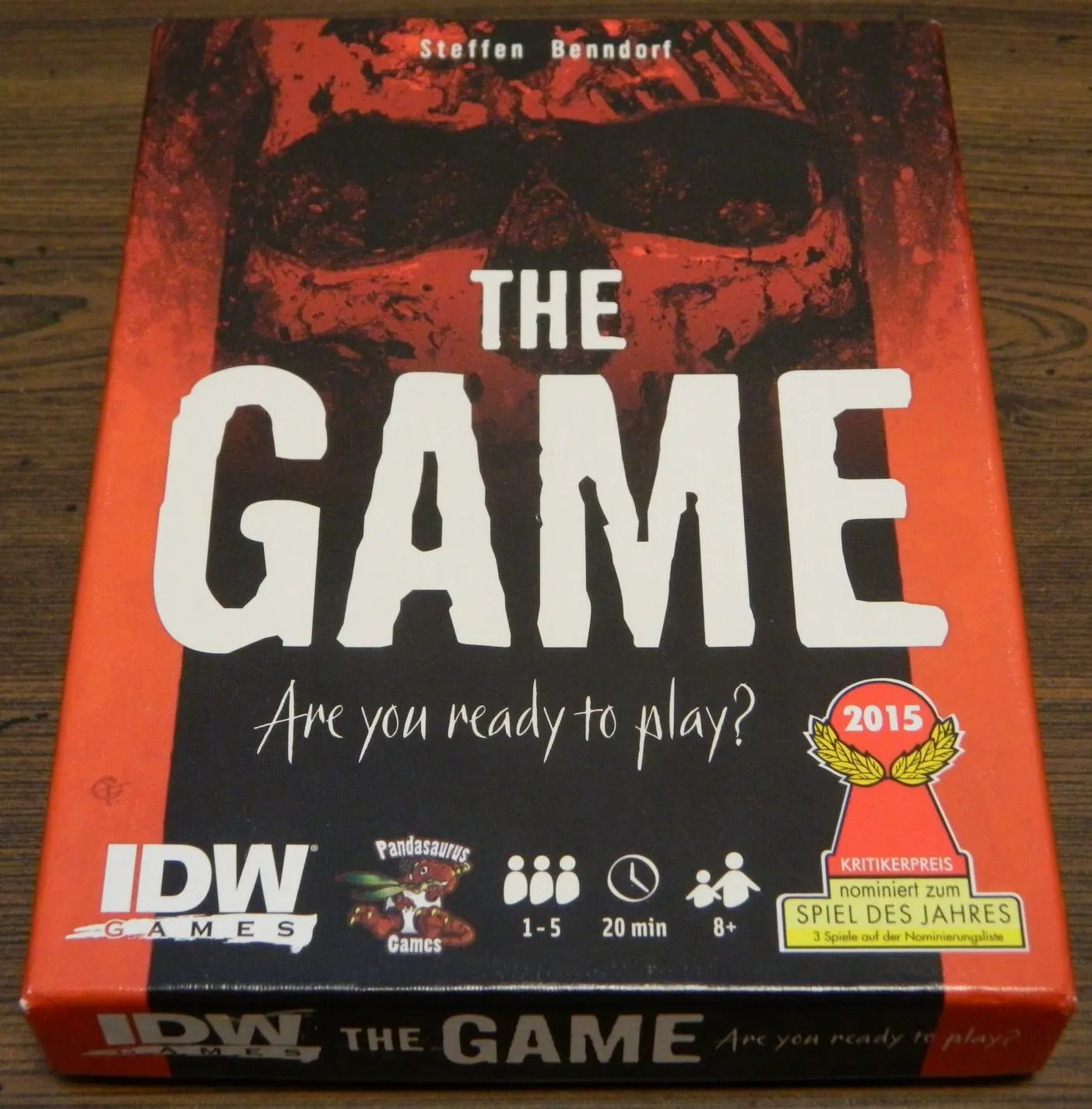So today I am going to look at one of the oddest titled board/card games that I have ever seen. Simply put the game is called The Game. You couldn’t of asked for a more direct title if you wanted. Released back in 2015 The Game is a card game that actually has a lot of acclaim around it. The game was nominated for the prestigious Spiel Des Jahres after all and was designed by Steffen Benndorf who is also known for Qwixx. Based on the name alone most people would have no idea what it was even about. It basically is a cooperative game where all of the players have to work together to try and play all of the cards to four different piles. The Game (2015) is arguably the game with the dumbest title that I have ever played that likely won’t appeal to everyone, but hidden beneath the surface is a surprisingly deep and satisfying game.
How to Play The Game (2015)
Setup
- The players will separate the four starting cards from the rest of the cards. These cards will be placed in a row with one card on top of one another.
- The rest of the cards will be shuffled. Cards will be dealt to each player depending on the number of players:
- 1 player: 8 cards
- 2 players: 7 cards
- 3-5 players: 6 cards
- The remaining cards will form the draw pile.
- Each player will look at the cards that they were dealt. The players will decide who they want to start the game.
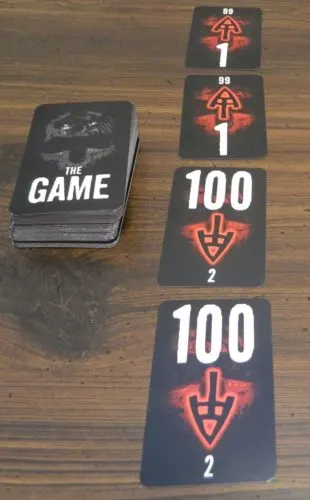
Playing Cards
The objective of The Game (2015) is to try to play as many of the 98 cards as you can.
On each player’s turn they must play at least two cards from their hand to one of the four piles. Cards can be played in any order. A player can play two or more cards to the same pile, and/or can play cards to multiple different piles.
In the game you will be forming four different piles.
First there will be two ascending piles. For these piles each subsequent card added to them must be a higher number than the previous played card. For example on one of these piles you could play cards such as 2, 5, 7, 8, 13, 16, etc.
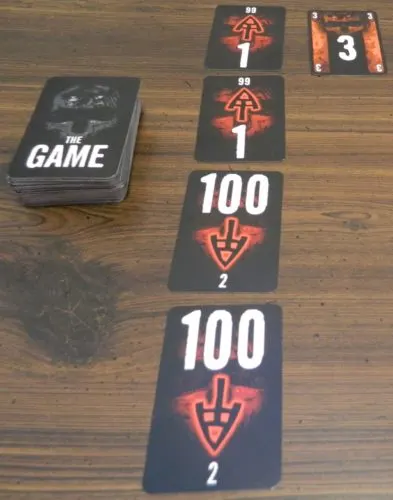
There are also two descending piles. For these piles each subsequent card added must be lower than the previous card. For example you could play 98, 95, 91, 85, 84, etc.
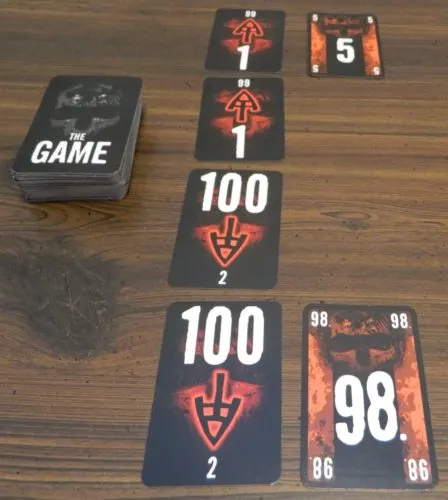
There are two exceptions to playing cards to the ascending and descending piles. If a player has a card that is exactly ten lower than the current number on the top of an ascending pile, they may play it thus lowering the number for the pile.
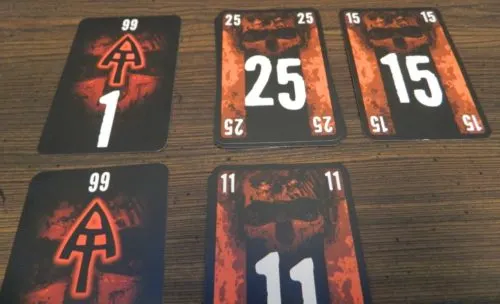
If a player has a card that is exactly ten higher than the current number on the top of a descending pile, they may play it thus raising the number for the pile.
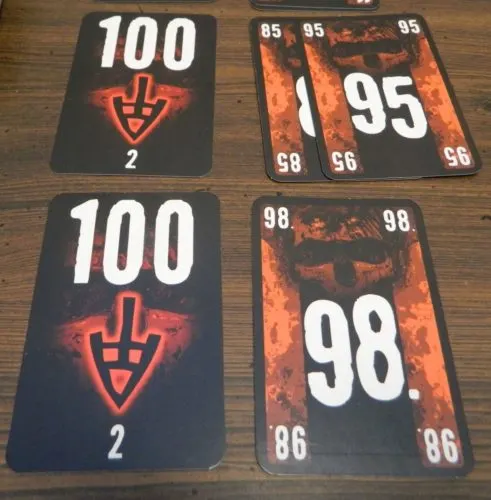
These exceptions can be used multiple times in order to increase the number of cards that can be played to the pile.
Communication
To determine what cards players should play on their turn, players are allowed to communicate with one another. At no point can any player say the exact numbers that they hold in their hand. Players are allowed to say things about whether players should play on certain piles though giving them a general idea of what type of cards that they hold.
End of Turn
Once a player has played cards they will draw the same number of cards from the draw pile. If the draw pile runs out of cards the players will continue playing with just the cards left in their hands. The next player clockwise will then take their turn.
End of Game
When the draw pile runs out players will continue playing without drawing cards at the end of their turn. At this point each player only has to play one card each turn. They can choose to play more than one card on their turn if they want though. If a player has no cards left in their hand they will skip their turn.
The game continues until one player is unable to play the required number of cards from their hand on their turn. The players will then count up how many cards that weren’t played (cards in the draw pile and players’ hands). If there are less than ten cards that weren’t played, the players did a good job. If the players succeeded at playing all 98 cards they have beat the game.
Increasing the Difficulty
The difficulty of the game can be increased in two ways.
First players can be forced to play more of their cards each turn.
Players could also choose to deal less cards to each player throughout the game.
*** For my thoughts on The Game (2015), check out page two (link below). ***

